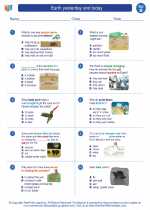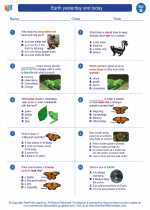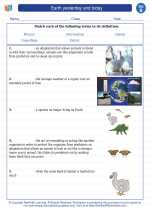Ice
Ice is the solid form of water. It is formed when water freezes at a temperature of 0 degrees Celsius (32 degrees Fahrenheit). When water reaches this temperature, its molecules slow down and form a rigid, crystalline structure, resulting in the formation of ice.
Properties of Ice
1. Transparency: Ice is transparent, allowing light to pass through it.
2. Density: Ice is less dense than liquid water, which is why it floats on water.
3. Melting Point: Ice melts into liquid water at 0 degrees Celsius (32 degrees Fahrenheit).
4. Expansion: When water freezes into ice, it expands in volume, which is why ice occupies more space than the same amount of liquid water.
Uses of Ice
1. Preservation: Ice is used to preserve food, as well as to keep drinks and perishable items cold.
2. Therapeutic Purposes: Ice packs are used to reduce swelling and alleviate pain in injuries.
3. Recreation: Ice is used for recreational activities such as ice skating, ice hockey, and curling.
Study Guide
.◂Science Worksheets and Study Guides Second Grade. Earth yesterday and today

 Worksheet/Answer key
Worksheet/Answer key
 Worksheet/Answer key
Worksheet/Answer key
 Worksheet/Answer key
Worksheet/Answer key
 Vocabulary/Answer key
Vocabulary/Answer key
